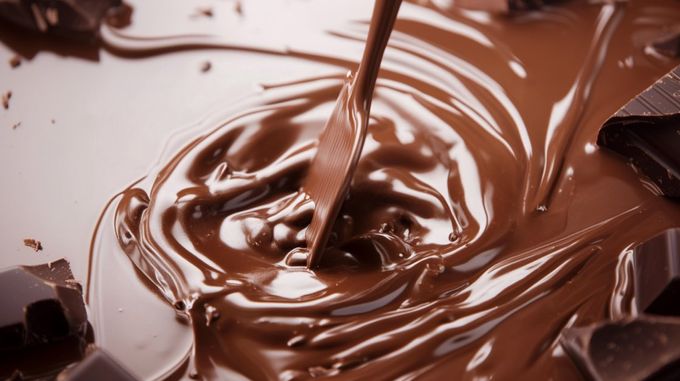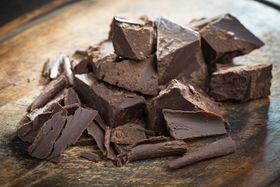Why Tempering Bean-to-Bar Chocolate Is More Difficult
From bean to bar: Why achieving that perfect snap and melt requires more than just good cacao
Published January 15, 2025

Tempering chocolate is often considered one of the most challenging aspects of chocolate making, and this process becomes even more complex when it comes to bean-to-bar chocolate.
At its core, tempering is a precise process of heating and cooling chocolate to stabilize cocoa butter crystals. When done correctly, it gives chocolate a glossy appearance, satisfying snap, and smooth mouthfeel.
» Savor the smooth melt and rich flavors of perfectly tempered bean-to-bar chocolate
The natural approach: Working without additives
Bean-to-bar chocolate presents several challenges that make tempering more demanding than working with industrial chocolate.
One of the primary factors making tempering bean-to-bar chocolate more challenging is the lack of stabilizers and emulsifiers. Industrial chocolate often contains additives like lecithin that help control the tempering process and maintain stability.
Bean-to-bar makers choose to work without these aids, relying instead on their skill and understanding of the chocolate's natural properties. This purist approach yields a more authentic product but requires greater attention to detail during the tempering process.
» Learn about the history of how traditional chocolate is made
The impact of bean variability
Bean variability plays a crucial role in the tempering process. Bean-to-bar makers must consider several key factors when working with different cacao origins.
The fat content of cacao beans varies significantly between origins and harvests, leading to different tempering requirements. Some beans naturally contain more cocoa butter, which affects how the chocolate flows and crystallizes during the tempering process.
The acidity levels in different cacao varieties can impact the chocolate's viscosity. A chocolate maker might find that one origin produces very fluid chocolate while another creates a thicker consistency, requiring temperature and time adjustments for tempering.
The presence of different compounds in various cacao varieties can affect crystallization patterns. Bean-to-bar makers must adjust their tempering approach for each new origin, as what works for one bean might not work for another.
» Try the fudgy notes of single-origin cacao from Uganda
Signs of improper tempering
Recognizing signs of improper tempering is crucial for bean-to-bar chocolate makers. These indicators help identify issues in the tempering process and guide necessary adjustments to achieve optimal results.
Visual defects
The most noticeable signs of improper tempering are on the chocolate's surface. Two main types of bloom can occur:
- Fat bloom: This is the most common type. It happens when cocoa butter, the fat in chocolate, migrates to the surface and recrystallizes. This often occurs due to temperature fluctuations, such as storing chocolate in a warm place and then moving it to a cold environment.
- Sugar bloom: When moisture comes into contact with the chocolate, the sugar crystals are dissolved. The sugar recrystallizes on the surface as the moisture evaporates, creating a white, powdery film.
Structural issues
The texture and structure of chocolate provide crucial insights into the tempering process:
- Snap test: Properly tempered chocolate breaks with a clean, sharp snap, while improperly tempered chocolate may bend or break unevenly.
- Surface appearance: A smooth, glossy surface indicates successful tempering, whereas a rough, uneven, or grainy surface suggests poor crystal formation.
- Mold release: Well-tempered chocolate contracts slightly during cooling, enabling easy release from molds.
- Melting behavior: Properly tempered chocolate maintains its stability at room temperature and melts smoothly upon contact with body temperature.
Sensory experience
The sensory experience of chocolate provides immediate feedback about tempering quality:
- The mouthfeel should be smooth and creamy. Graininess or waxiness indicates improper crystal formation.
- The melting progression should be uniform. Uneven or too-rapid melting suggests tempering issues.
- The release of flavors may be compromised if the crystal structure is incorrect, affecting the overall taste experience.
- Surface appearance affects visual appeal and can impact consumer perception of quality.
» Find out how bean-to-bar chocolate can elevate your baking
The critical role of temperature control
Temperature control becomes particularly critical in bean-to-bar operations. Several aspects require careful attention:
The ambient temperature of the workspace must be maintained between 18-22°C (64–72°F) to ensure proper crystallization. Even small fluctuations in room temperature can affect the tempering process and final results.
Mold temperature plays a crucial role in achieving proper crystallization. Using too cold molds can cause rapid crystallization and lead to imperfections, while molds that are too warm can prevent proper setting.
The working temperature range for dark chocolate is particularly narrow, typically between 31–32°C (88–90°F). Bean-to-bar makers must maintain this precise range without the help of industrial temperature control systems.
Time management challenges
The time factor in bean-to-bar operations adds another layer of complexity. Unlike industrial operations that can maintain tempered chocolate for extended periods, artisanal makers face several time-related challenges:
Once tempered, the chocolate must be worked with relatively quickly, as extended periods can lead to over-crystallization and thickening. This typically gives makers about 45–60 minutes of optimal working time.
If the chocolate becomes over-tempered, makers must carefully reheat it to melt some of the beta crystals without destroying the temper completely. This requires experience and careful attention to temperature.
» See how bean-to-bar is processed in KAICAO's chocolate lab
Storage and Environmental Considerations
Storage and environmental conditions pose ongoing challenges for bean-to-bar makers. Even perfectly tempered chocolate can develop issues if not stored properly.
Many artisanal makers invest in specialized cooling equipment and temperature-controlled storage areas to maintain their chocolate's quality.
Quality Control and Craftsmanship
Quality control in bean-to-bar operations requires constant vigilance. Makers must regularly perform tempering tests to ensure their chocolate is properly crystallizing. This might involve:
- Checking the chocolate's appearance for proper gloss and color
- Testing the snap of a small sample
- Observing how quickly and evenly the chocolate sets
- Examining the texture and mouthfeel of the finished product
Experienced makers often develop what they call a "feeling" for their chocolate. This intuitive understanding comes from working extensively with different origins and varieties, learning to recognize subtle signs that indicate whether the tempering process is proceeding correctly.
» Discover the exquisite taste of Peruvian chocolate from the Piura region
Insights from KAICAO Chocolate
Through years of hands-on experience at KAICAO, we've discovered several key insights about tempering.
- Our dark chocolate, particularly the 100% cacao bars, can be tempered at slightly higher temperatures (around 32°C) due to their high cocoa butter content. This makes them somewhat more forgiving during the tempering process.
- We've discovered that molding at temperatures between 50 and 55°C creates distinct textures in the final product. This demonstrates how temperature can be used strategically to achieve specific characteristics.
- Using dates as a natural sweetener means maintaining strict temperature control to prevent burning and ensure proper crystallization. This requires significantly more attention than conventional chocolate products.
- We maintain our workspace at a precise temperature range of 18–22°C and use specialized refrigeration equipment that keeps temperatures above 10°C. This helps prevent issues associated with overcooling.
When combined with high-quality beans and careful processing, our tempering creates chocolate with a purer taste, improved texture, and more nuanced flavors than mass-produced alternatives.
The rewards of proper tempering
The meticulous tempering process behind bean-to-bar chocolate elevates quality ingredients to an experience unmatched by mass-produced chocolate. While these artisanal bars may require more careful handling and storage, they offer a taste of chocolate in its purest, most carefully crafted form.
The glossy sheen, crisp snap, and smooth melt of a well-tempered bar reflect the successful blend of skilled craftsmanship and high-quality ingredients.
» Indulge in KAICAO's expertly tempered bean-to-bar chocolate
Indulge in the finest single-origin cacao
Disclaimer: The chocolate information provided by KAICAO is intended for educational purposes related to chocolate products. We encourage you to embrace the chocolate experience, savor each moment, and explore the world of chocolate with passion.






